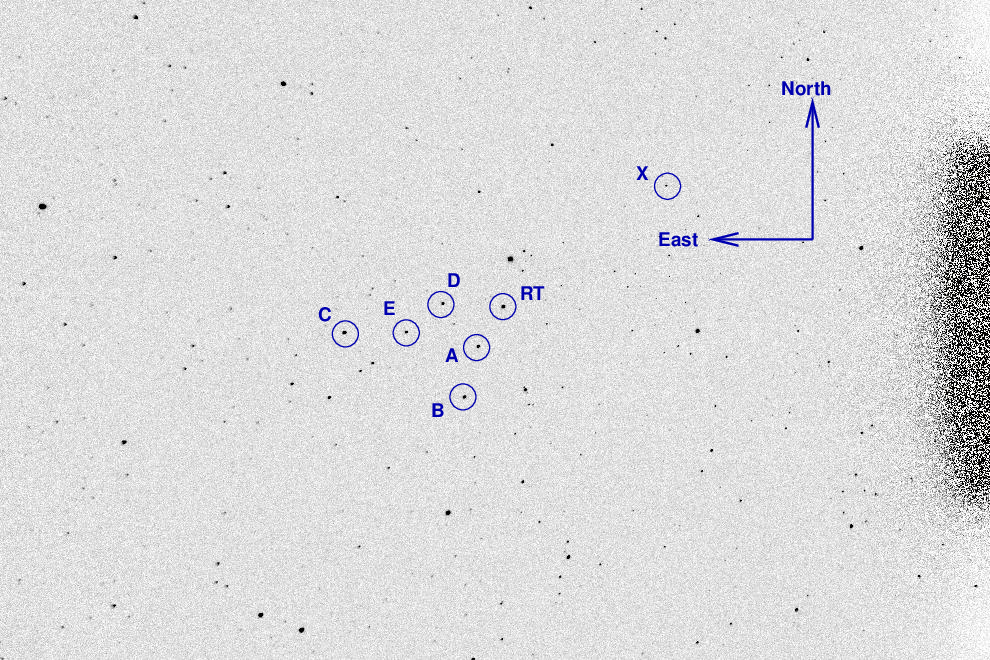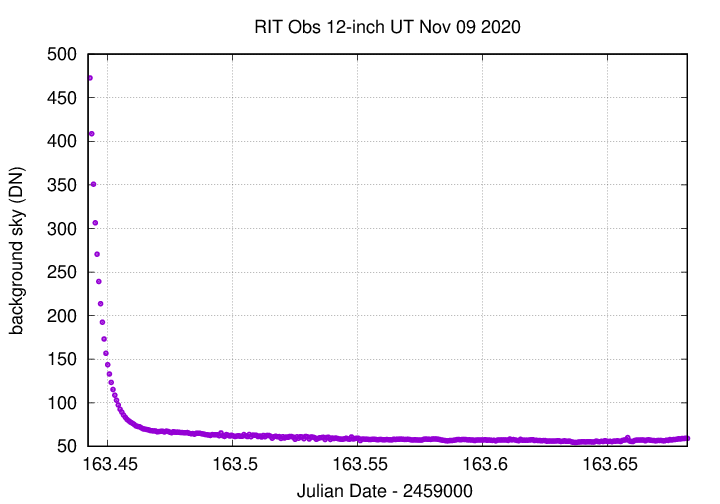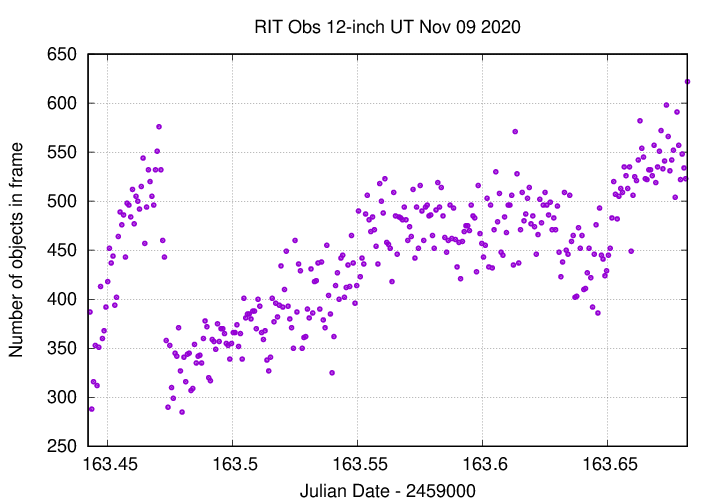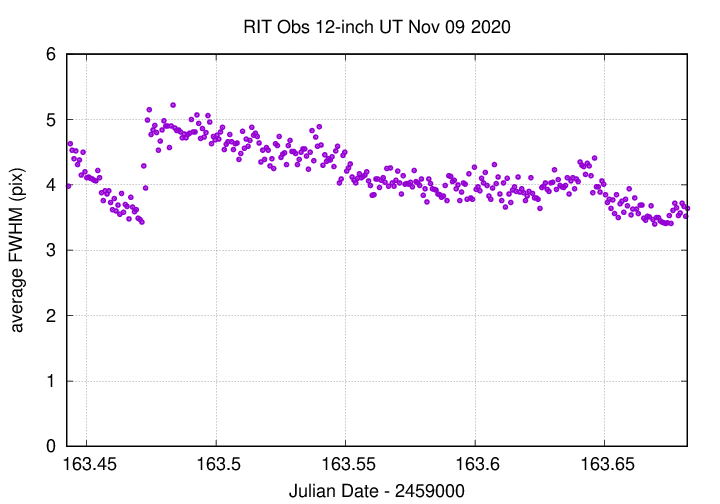
On the night of Nov 09/10, 2020, under good conditions, I acquired V-band and I-band images of the eclipsing variable star RT And, which one of my capstone students will analyze. I caught one eclipse in the middle of the run.
The other star in the field which I suspect to be an eclipsing binary showed no variations tonight.
You can find some basic information on this star at the SIMBAD's page for it.
The main setup was:
Notes from the night:
The object is at
RA = 23 11 17.9 Dec = +52 59 59.2 (J2000)
A chart of the field based on pictures tonight is shown below. The size of the chart is about 38 x 26 arcminutes.

The stars "A", "B", and "C" appear in the charts and tables for this field made by the AAVSO. see
I used the star labelled A = "102" to shift my measurements to the "B" magnitude scale. It has V = 10.159, according to the AAVSO chart and table. It also has magnitude i = 10.127 according to the APASS catalog. I used this i-band magnitude as equivalent to I-band magnitude for the preliminary calibration.
Here's a picture of the TV with the finder's field of view when pointing at RT And:

The dark current was normal this evening:

The sky value shows no evidence for clouds; good.

The number of objects detected.

Note the big changes in FWHM as a result of my changes in the focus position, required to avoid saturation. I discovered that using apertures of radius 7 or 9 led to a discontinuity in the photometry before and after JD 143.47. Increasing the aperture radius to 11 pixels (in both V and I) seemed to yield acceptably uniform measurements.

Using aperture photometry with a radius of 11 pixels (binned 2x2, each pixel is 1.25 arcsec, so a radius of 13.75 arcsec), I measured the instrumental magnitudes of a number of reference stars and the target. Following the procedures outlined by Kent Honeycutt's article on inhomogeneous ensemble photometry, I used all stars available in each image to define a reference frame, and measured each star against this frame.
Sigma-vs-mag plots show that the floor was about 0.006 mag in V with 10-second exposures, and about 0.009 mag in I with 25-second exposures as well. I marked all the bright stars as possible variable.


Last modified 11/11/2020 by MWR.